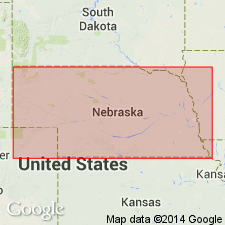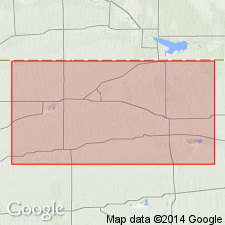
- Usage in publication:
-
- Crete formation
- Modifications:
-
- Original reference
- AAPG geologic province:
-
- Salina basin
Summary:
Pg. 24-25. Name applied to unit which Lugn (1935) [1934] classified as "valley phase" of Loveland formation. A channel fill deposit which rests unconformably upon Upland formation or older Pleistocene deposits and is believed to be Illinois in age. Consists of sand, light-pinkish-brown in upper part, brownish-gray in middle, light-brownish-gray in lower part; grading from medium- to coarse-grained sand with fairly common fine to medium gravel in lower part, to fine to medium sand with rare fine gravel and fairly common silt in upper part; thin zone (1 to 2 inches) of red-brown iron-stained sand at base. Thickness 8 to 9.5 feet. At type locality, underlies Loveland formation.
Type locality: in roadcuts along State Highway 33 about 1.5 mi west of main intersection at Crete, in NE/4 sec. 32, T. 8 S., R. 4 E., Saline Co., NE.
Source: US geologic names lexicon (USGS Bull. 1200, p. 983).

- Usage in publication:
-
- Crete member
- Modifications:
-
- Revised
- Areal extent
Summary:
Pg. 42-43. Extended into Kansas where it is basal member of Sanborn formation. Underlies Loveland member.
See also, J.C. Frye, and A. Byron Leonard, 1952, Kansas Geol. Survey Bull., no. 99, p. 52 (fig. 2), 110-115.
Source: US geologic names lexicon (USGS Bull. 1200, p. 983).
For more information, please contact Nancy Stamm, Geologic Names Committee Secretary.
Asterisk (*) indicates published by U.S. Geological Survey authors.
"No current usage" (†) implies that a name has been abandoned or has fallen into disuse. Former usage and, if known, replacement name given in parentheses ( ).
Slash (/) indicates name conflicts with nomenclatural guidelines (CSN, 1933; ACSN, 1961, 1970; NACSN, 1983, 2005, 2021). May be explained within brackets ([ ]).

